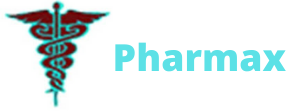- Call Us(908) 231-6691
- Email us info@pharmax.net
 The Role of Rifadin in Tuberculosis Treatment: a Comprehensive Guide
The Role of Rifadin in Tuberculosis Treatment: a Comprehensive Guide
Introduction to Tuberculosis and Rifadin
Tuberculosis, a contagious bacterial infection that primarily affects the lungs, remains a significant global health concern. Rifadin, also known as rifampin, is a vital component in the treatment of tuberculosis due to its potent antibacterial properties. It plays a crucial role in combating the bacteria responsible for tuberculosis, aiding in the eradication of the infection and preventing its spread to others.
Rifadin's mechanism of action involves inhibiting the synthesis of bacterial RNA, ultimately leading to the disruption of protein production within the tuberculosis-causing bacteria. This targeted approach helps to effectively kill the bacteria and reduce the severity of the infection. Proper dosage and administration of Rifadin are essential to ensure optimal treatment outcomes and minimize the risk of developing drug resistance.
As with any medication, Rifadin may cause certain side effects and require specific precautions during treatment. Patients should be aware of potential reactions and adhere to prescribed guidelines to mitigate any adverse effects. Additionally, understanding Rifadin's interactions with other drugs is crucial to avoid potential complications and ensure the effectiveness of tuberculosis treatment.
| Common Side Effects | Precautions |
|---|---|
| Nausea | Avoid alcohol consumption |
| Heartburn | Inform healthcare provider of any existing medical conditions |
| Headache | Take Rifadin on an empty stomach unless directed otherwise |
Mechanism of Action of Rifadin

Rifadin works by inhibiting the synthesis of bacterial cell walls, specifically targeting the RNA polymerase enzyme responsible for transcribing DNA into RNA. This disruption ultimately leads to the death of the tuberculosis bacteria. The drug's bactericidal action makes it an essential component of the treatment regimen for tuberculosis patients, significantly improving their outcomes. By understanding Rifadin's mechanism, healthcare providers can better tailor treatment plans for individuals affected by this infectious disease. Familiarity with the pharmacological action of rifadin empowers healthcare professionals to make informed decisions in managing tuberculosis cases and ensuring optimal patient care.
Rifadin Dosage and Administration
Rifadin, also known generically as rifampin, is a crucial medication in the treatment of tuberculosis. It is typically prescribed in combination with other drugs to effectively combat the spread of the infection. The dosage and administration of Rifadin are carefully tailored to each individual's condition and response to the treatment. Pharmacies must accurately fill the prescriptions for Rifadin to ensure patients receive the right amount of medication to combat the tuberculosis infection. Mixing up the dosage or administration instructions could potentially lead to treatment failure or negative side effects, underlining the importance of precision in handling Rifadin prescriptions.
Common Side Effects and Precautions

Common side effects of Rifadin may include gastrointestinal disturbances, such as nausea, vomiting, and abdominal pain. Patients may also experience headaches, dizziness, and fatigue. It is important to monitor liver function tests regularly due to the potential for hepatotoxicity. Additionally, precautions should be taken for patients with a history of liver disease or alcoholism. Rifadin may also cause discoloration of body fluids, such as urine, sweat, and tears, turning them a reddish-orange color, which is harmless but should be explained to the patient to avoid unnecessary concern.
Rifadin Drug Interactions
Rifadin may interact with a variety of medications, potentially affecting their effectiveness or increasing the risk of side effects. It is crucial to inform your healthcare provider about all the medications you are currently taking, including over-the-counter drugs and supplements, to avoid any harmful interactions. Some common drug interactions with Rifadin include hormonal contraceptives, blood thinners, and certain antiviral medications. Your healthcare provider will closely monitor your medication regimen to minimize the risk of any adverse effects while ensuring the effectiveness of your treatment plan.
Here is a table highlighting some common drug interactions with Rifadin:
| Medication Category | Interactions with Rifadin | | ----------------------- | ------------------------- | | Hormonal Contraceptives | Decreased effectiveness | | Blood Thinners | Increased bleeding risk | | Antiviral Medications | Reduced antiviral efficacy |
Ensure to consult your healthcare provider for personalized advice on managing potential drug interactions with rifadin.
Monitoring and Follow-up during Rifadin Treatment
Rifadin treatment necessitates diligent monitoring and follow-up to ensure its efficacy and minimize potential risks. Regular check-ups and consultations are vital to assess the patient's response to the medication and address any emerging issues promptly. Additionally, monitoring for adverse reactions or drug interactions is crucial to guarantee the patient's well-being throughout the treatment process. Healthcare providers play a significant role in guiding patients on the importance of compliance and reporting any concerning symptoms promptly.
Taking a proactive approach to monitoring and follow-up during Rifadin treatment can significantly enhance its effectiveness and mitigate any potential complications. Patients should be encouraged to communicate openly with their healthcare team and report any unusual symptoms or side effects promptly. Through consistent monitoring, healthcare providers can adjust the treatment plan if needed and ensure optimal outcomes for patients undergoing Rifadin therapy. By adhering to the recommended monitoring protocols, both patients and healthcare providers can work together to achieve successful treatment outcomes.
For further information on Rifadin and its role in tuberculosis treatment, you can refer to reputable sources such as the Centers for Disease Control and Prevention (CDC) and the National Center for Biotechnology Information. These sources offer valuable insights into the use of Rifadin in clinical practice and provide evidence-based guidance for healthcare professionals involved in tuberculosis management.
